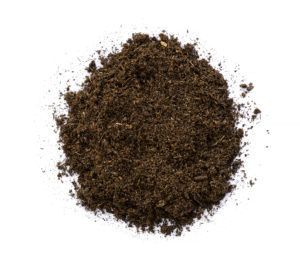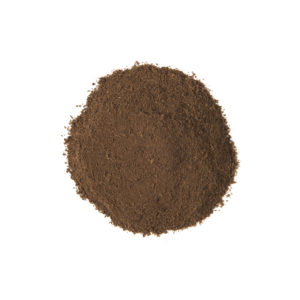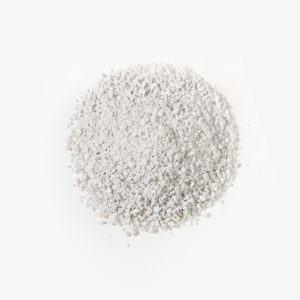Read our article on the advantages of growing strawberries in growing media to learn more about the differences between this method and growing in open soil. Now, let’s get into the technical conditions for strawberry cultivation.
Water quality
The availability of water of good quality is crucial when growing strawberries in growing media. It’s one of the main conditions for strawberry cultivation. Make sure to have your fresh irrigation water analyzed before deciding to make the switch. In the following paragraphs we’ll cover the main parameters for judging water quality and explain why they are important.
Conductivity (EC) and Salts
First of all, we’ll have a look at conductivity, or as we call it EC level. The required EC level of the irrigation water used for strawberry plants varies between 1.2 and 2.0mS/cm, measured from the drip, depending on factors like temperature and growing phase. This parameter shows you the total amount of dissolved salt in the irrigation water. Salts in water can either be useful nutrients like calcium, magnesium or sulphate, or ballast like chloride or sodium. These ballast salts can become toxic to plants when present in big numbers. Make sure to take these salts and total EC level into account when composing a fertilizer mixture.
Acidity (pH) and bicarbonate
Another important parameter is pH. The right pH value is essential for good availability of nutrients. For strawberries the optimal water-pH is usually between 5.5 and 6.0.
However, pH is not the sole indicator for calculating the amount of acid needed to bring the water to the right pH level. To determine that, you need to know the concentration of bicarbonate in the water. Bicarbonate needs to be neutralized by adding acid to the water. As long as bicarbonate is present in the water, the pH level will not change significantly when dosing acid. If outstandingly high numbers of bicarbonate are present, it might be necessary to pre-treat the water.
Iron
Finally let’s have a look at iron. This element is commonly found in ground water. The presence of iron is not harmful to the plants, but it can cause drippers to become blocked. It can also leave brown stains on surfaces it comes into contact with. This only happens if the water contains over 10 micromol per liter. Upon exposure to air the iron particles change to iron oxide which causes the issues described above. Water containing high iron levels can be de-ironed before use.
Growing media quality
Of course the type of growing medium you use for your crops is highly important for successfull cultivation. It needs to meet several requirements. It’s highly important the growing medium takes up and holds water and nutrients. In addition it should also keep both easily available to the plant roots when needed.
Next to that the air capacity in the growing medium is important as well, as the roots need enough oxygen and space to grow. A fitting growing medium contains enough pores of different sizes to allow air to be exchanged throughout the entire container volume.
For long-term cropping it’s important the growing medium has optimal long lasting characteristics, making sure it doesn’t compact and providing the plant with durable structural stability.
Parameters for growing media
So, if we can use parameters to judge water quality, we can also set parameters to determine substrate suitability. Some of the most important parameters are:
- air filled porosity,
- water uptake characteristic (WOK),
- water and nutrient absorbtion and release patterns,
- chemical and structural stability.
Now, let’s look at some commonly used raw materials in the second part of this article.
Growing media composition
The most common raw materials used in the berry industry are peat, coir and perlite. We’ll have a look at the characteristics of these materials and why the right growing media composition is one of the conditions for strawberry cultivation.
Peat

Peat actually is moss that decomposed in a low-oxygen environment.
You mainly find peat in the Northern hemisphere, originating from multiple different countries. The climate and local environmental changes influence the way peat turns out. This causes the characteristics of peat to vary depending on the harvesting area. Characteristics also vary in peat from lower and higher layers. The peat that’s harvested at the greatest depth is the oldest material, and therefore the material that is most decomposed. This is the dark, or black peat. In the higher layers the level of decompositions decreases and the peat changes to brown and white. The more decomposed black peat contains less air than younger white peat.
So, the characteristics of the peat vary depending on origin and harvesting depth. In addition the harvesting and screening methods can greatly influence the physical characteristics of peat as well. For example, vertically harvested block peat adds better structural stability to a mixture than horizontally harvested milled peat.
Peat and pH
The acidity of a mixture controls the availability of nutrients for the plants. Peat adds a pH-buffer to a mixture, making sure the mixture is protected against sudden changes in pH levels. This is caused by the humic acids present in the raw material. They are weak acids that add hydrogen ions to the solution when pH rises. When pH falls they pick up protons. As a result the pH doesn’t change.
Coconut coir

Coir is another common raw material in the berry industry. It comes from the inside of coconut husks. This is filled with fiber and a “coconut pulp”. This coir dust can be used in growing media. It provides a relatively good and stable structure to the mixture and is fairly easy to handle.
pH-buffering
Coir has a minimal pH buffering capacity, which makes crops growing in pure coir susceptible to pH related nutrient deficiencies.
Cation exchange complex
In addition coir has a negatively charged complex which is naturally saturated with sodium and potassium. We call this the cation exchange complex (CEC).
However, calcium and magnesium are strongly attracted to this complex. This can cause a “lockup” in the complex when adding fertilizer. This means the coir will release sodium and potassium to the plant and takes up the calcium and magnesium. This causes a variety of crop problems like excessive salt uptake and calcium deficiencies.
Avoiding these issues is one of the highly relevant conditions for successful strawberry cultivation. To avoid these problems, coir should always be pre-buffered with calcium and flushed.
Perlite

Perlite is volcanic glass (silicon dioxide). Companies heat particles of this glass to make them “pop” (like popcorn). This causes the perlite to grow to 15-20 times its original volume. The material has a very stable structure and adds aeration to growing media mixtures. Perlite also increases the speed at which a mixture retains moisture.
Combining these raw materials enables us to create a balanced, high quality growing medium. We can easily tailor these mixes to the needs of a grower and the unique circumstances at the growing facilities. Have a look at our Strawberry product portfolio to learn about our different product lines. Or ask our teamfor personal advice.
